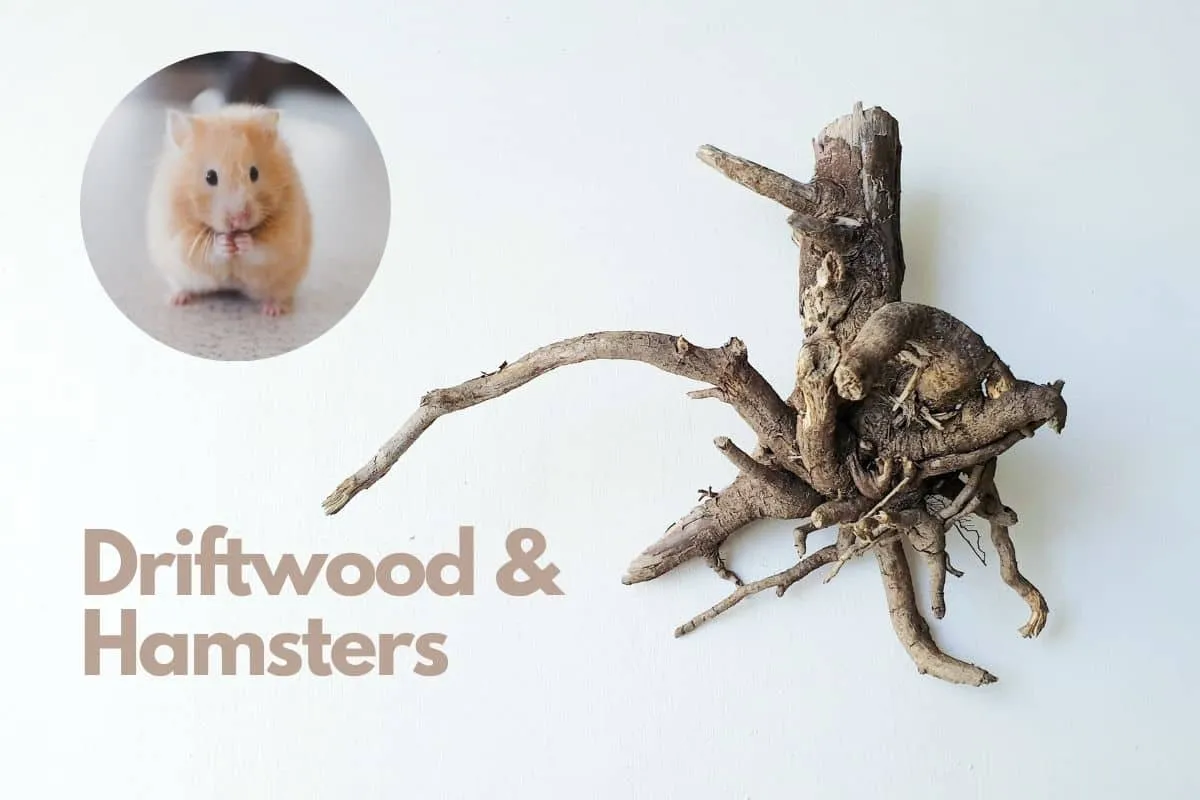While driftwood is widely used in aquariums and reptile enclosures, its application as decoration in hamster cages is rarely seen, and sort of a niche topic. Driftwood presents a great way to give your hamster’s place of residence a natural piece of decoration which they can use to climb and run around on. Driftwood also makes for a great gnawing tool, as hamsters have to chew on something to keep their ever-growing teeth in check and healthy. Considering this, driftwood makes for a great addition to your hamster’s enclosure, but proper care and consideration is needed to use it and keep your hamster safe.
What type of driftwood can I put in my hamsters’ cage?
There are various ways to categorize driftwood, and as such different things to consider. Firstly, you should use natural driftwood, instead of driftwood that stems from manmade objects (also known as jetsam or flotsam). The latter can be imbued with chemicals that can be harmful to your hamster.
Secondly – driftwood that stems from hardwood and driftwood. You should use hardwood, as softwood may splinter and injure your hamster’s mouth.
Finally – commercially available driftwood or driftwood that is found in nature. In practice, both options are fine.
Ideally, you would want to use natural hardwood from a clean source, free of any pollution and that hasn’t been treated with any chemicals. If you plan to use commercial driftwood from a store, be sure it’s rated safe for use in an aquarium.
Can hamsters chew wood?
Yes, hamsters can and will chew on wood. This is also referred to as gnawing, and is a vital process for your hamster to stay healthy. Unlike humans, hamsters, like all rodents, have continuously growing teeth, akin to your fingernails. In the wild, hamsters grind down their teeth through regular eating behavior and gnawing on different things, most commonly wood. But if wood is not available they will gnaw on pretty much anything, possibly causing damage to themselves. Thus, it is advised to keep some sort of gnawing toy in their enclosure to ensure healthy teeth and healthy hamsters.
Grinding is an incredibly important thing for your hamster’s health. If overgrowth happens, your hamster may die from starvation. As their overgrown teeth prevent any grinding, and make it impossible to eat. If you notice this, or have concerns, your vet can clip your hamster’s teeth, and also teach you how to do it yourself. Be sure to check your hamster’s teeth every month.
What type of wood is safe for hamsters to chew?
The first thing to consider is using hardwood in a hamster cage. Softwood may chip and splinter, causing injuries to the mouth of your hamster. Other things to consider are tannins, oils and treated (painted and stained) wood.
Driftwood with high levels of tannins, such as Mopani driftwood, may be toxic to hamsters. Although this depends on the type of hamster, and their individual chewing habits. In any case, the majority of tannins can be removed by boiling and soaking driftwood, to make it safe for your hamster.
Next are natural oils found within certain species of wood. Cedar and pine wood, for instance, can make your hamster sick. Some trees like oleander and yew even produce toxins, which make them unsafe and even deadly for hamsters.
How to make driftwood safe for hamsters?
Now that we have covered the basic aspects of picking driftwood for your hamster, now we will explain the process to make it safe for hamsters.
The first step is to pick your driftwood. If you get your own driftwood from nature, be sure it is from a safe source, away from any pollution. Inspect the driftwood for any large debris and shake any mud off of it. After you take it home, wash it thoroughly under a constant stream of water and with a brush. Inspect the wood for any sharp and loose edges, and remove them with an appropriate tool. If you choose to buy your driftwood, make sure it is rated for use in an aquarium. Do not buy any driftwood that has been treated with paint, resin or similar products. Also, avoid Mopani driftwood due to its high tannin content.
After you’ve acquired the driftwood, the next step is leaching out the tannins out of it. This can be accomplished by soaking the driftwood in water, in an appropriately sized container. Change the water every two to three days, until the water runs clear when you leave the wood to be soaked. Depending on the wood, this can take a week or two. This process can be sped up by boiling the driftwood at 200°F for two to three hours. After most of the tannins have been removed from the wood, leave it to dry in a ventilated space for a few days. You can also bake the driftwood for an hour or two at 200°F to draw out any leftover moisture.
After all of this is done, your driftwood is ready to be placed in your hamster cage. If you have any additional considerations about the safety of your hamster, you should reach out to your veterinarian for any additional information.

